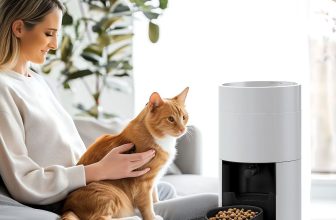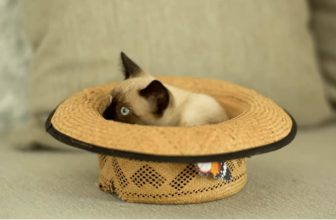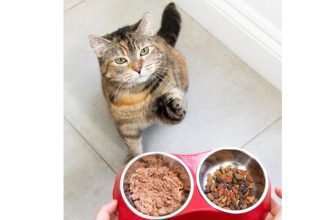Can Cats Eat People Food? Safe & Unsafe Foods for Cats

Cats are curious creatures, often intrigued by what’s on your plate. But can cats eat people food safely? While sharing your meal with your feline friend might seem harmless, it’s important to understand the risks involved. Cats have different dietary needs from humans. Certain foods can cause health issues, ranging from mild discomfort to severe poisoning.
Knowing what’s safe and dangerous is crucial for your pet’s well-being. This guide will explore common foods and their effects on cats, helping you make informed choices about what to feed your furry companion. Let’s dive into the details and ensure your cat stays healthy and happy.
Cats And Human Food
Cats are curious animals. They often try to eat human food. Many cat owners wonder if it’s safe. Understanding cats and human food is important. It helps keep your cat healthy and happy.
Common Myths
There are many myths about cats eating people’s food. Some think cats can eat anything. This is not true. Cats have different needs from humans. Here are some common myths:
- Myth 1: Cats can eat chocolate. Fact: Chocolate is toxic to cats.
- Myth 2: Cats can eat onions and garlic. Fact: These can cause anemia in cats.
- Myth 3: Cats can eat dairy products. Fact: Many cats are lactose intolerant.
Many people believe that cats enjoy milk. In movies and books, cats often drink milk. But most cats are lactose intolerant. Milk can cause stomach issues. It may lead to diarrhea.
Another myth is that cats can eat bones. This is dangerous. Bones can splinter. They might hurt a cat’s mouth or throat. Cooked bones are even riskier.
It is also common to think cats love fish. While fish is good in small amounts, too much can cause problems. Fish lack certain nutrients. This can lead to health issues.
Nutritional Needs
Cats have specific nutritional needs. They are obligate carnivores. This means they need meat to survive. Their diet should be high in protein. It should also include fats and minimal carbs.
| Nutrient | Importance |
|---|---|
| Protein | Builds and repairs tissues. Supports the immune system. |
| Fats | Provides energy. Keeps skin and coat healthy. |
| Vitamins | Supports overall health. Prevents deficiencies. |
| Minerals | Maintains bone health. Supports bodily functions. |
Human food often lacks these nutrients. Cats need taurine, an amino acid. Taurine is found in meat. Without taurine, cats can suffer heart problems. They can also have vision issues.
Feeding cats human food can lead to obesity. Many human foods are high in calories. Cats need balanced diets. Overfeeding can cause weight gain. This leads to health issues.
It is best to give cats food made for them. Cat food is designed to meet their needs. It contains the right balance of nutrients. This keeps cats healthy and happy.
Safe Foods
Cats are curious creatures. They often show interest in what we eat. But not all human foods are safe for them. Knowing which foods are safe can help keep your cat healthy.
Fruits And Vegetables
Some fruits and vegetables are safe for cats. These can be a healthy treat. Always wash fruits and vegetables before giving them to your cat. Remove seeds and pits.
- Apples (without seeds)
- Bananas
- Blueberries
- Carrots
- Cucumbers
- Pumpkin
- Spinach
Apples and bananas are sweet and tasty. Cats might enjoy them in small pieces. Blueberries are another safe option. They are small and easy to eat.
Carrots and cucumbers can be given raw or cooked. They are crunchy and fun for cats to eat. Pumpkin is good for digestion. Spinach provides vitamins and minerals.
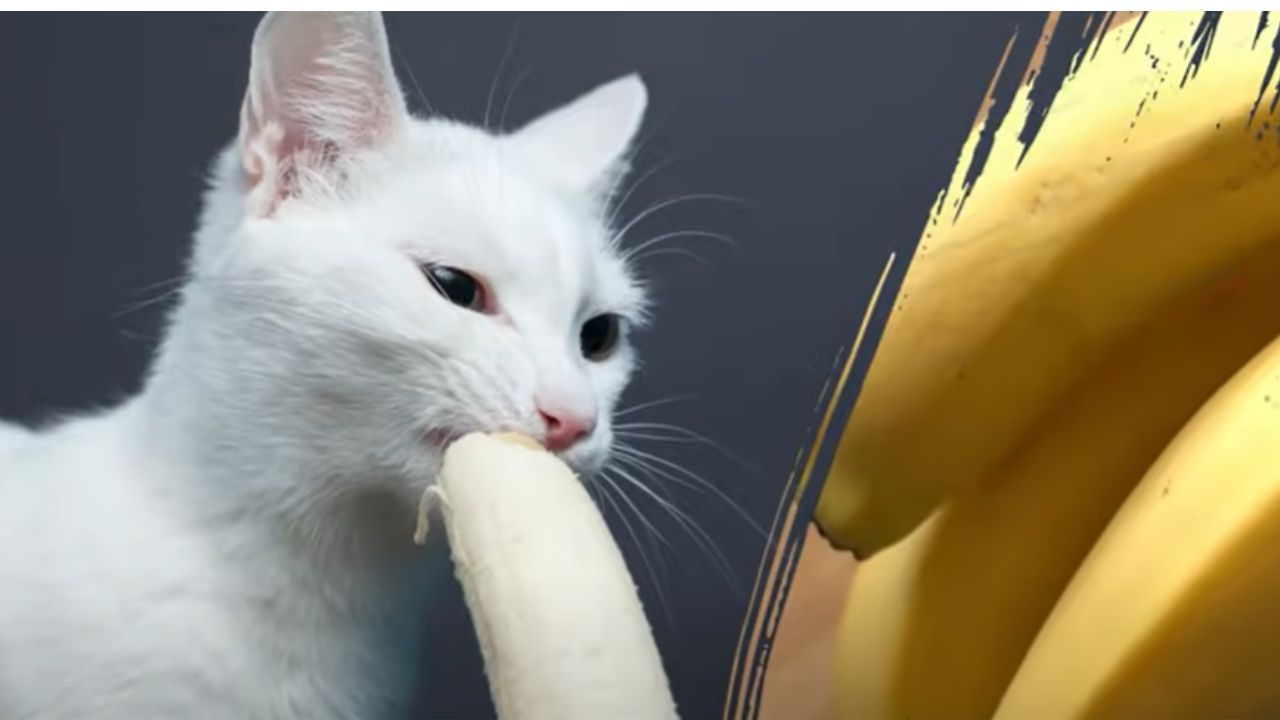
Meats And Fish
Meats and fish are closer to a cat’s natural diet. Many cats love them. These foods provide protein, which is essential for cats. Always cook meat and fish before giving them to your cat. Raw meat can contain harmful bacteria.
- Chicken
- Turkey
- Beef
- Salmon
- Tuna
Chicken and turkey are common and safe choices. Cut them into small pieces. Make sure there are no bones. Beef is another good option. It is rich in protein and iron.
Salmon and tuna are popular with cats. They have healthy fats and omega-3 fatty acids. But give them in moderation. Too much fish can lead to health problems.
Remember, treats should not replace a balanced diet. Always consult with a vet before making changes to your cat’s diet.
Foods To Avoid
Cats are often curious about what their owners are eating. While it might be tempting to share your food with your feline friend, it’s important to know which foods are safe and which are not. Some human foods can be harmful or even toxic to cats. This article will discuss the foods to avoid and common snacks that might seem harmless but can be dangerous for your cat.
Toxic Ingredients
Many foods that are safe for humans can be toxic to cats. It’s crucial to know which ingredients to avoid to keep your cat healthy.
Some of the most dangerous ingredients include:
- Onions and Garlic: These can damage a cat’s red blood cells, leading to anemia.
- Chocolate: It contains theobromine, which is toxic to cats and can cause heart problems.
- Grapes and Raisins: Can cause kidney failure, even in small amounts.
- Alcohol: Even a small amount can be fatal to cats, leading to liver and brain damage.
Other ingredients to avoid include:
| Ingredient | Potential Harm |
|---|---|
| Caffeine | Increases heart rate and can be fatal |
| Xylitol | Can cause a dangerous drop in blood sugar |
| Raw Dough | Expands in the stomach, causing pain and bloating |
Common Human Snacks
Many snacks that people enjoy can be harmful to cats. It’s essential to be cautious about what your cat gets into.
Here are some common snacks to avoid:
- Chips: High in salt and can cause dehydration.
- Candy: Often contains sugar or artificial sweeteners like xylitol.
- Popcorn: Can be a choking hazard and may contain harmful seasonings.
- Milk: Many cats are lactose intolerant and can suffer from stomach upset.
Even snacks that seem healthy for humans can be problematic for cats. For example:
Nuts: High in fat and can cause digestive issues. Avocado: Contains persin, which is toxic to cats.
Always consult your veterinarian before introducing any new food to your cat’s diet. It’s better to be safe and stick to cat-friendly treats.
Portion Control
Many cat owners wonder if they can share their food with their feline friends. Cats are curious creatures and often show interest in what their owners are eating. But not all human food is safe for cats. It’s important to know what types of food are okay and how much is too much. This is where portion control becomes very important.
Treats Vs. Meals
It’s crucial to understand the difference between treats and meals for cats. Treats should be given in small amounts and not too often. They are not a replacement for a balanced diet.
Here are some safe treats for cats:
- Cooked meat like chicken or turkey.
- Small pieces of cheese.
- Plain yogurt.
- Cooked fish.
Meals should be nutritionally balanced and provide all the necessary vitamins and minerals. Cat food is specially made to meet these needs. Giving too many treats can lead to health problems. It can make them less interested in their regular food.
Always make sure the treats are:
- Free from garlic and onions.
- Not salty or spicy.
- Given in moderation.
Caloric Considerations
Keeping track of calories is vital for a cat’s health. Overfeeding can lead to obesity and other health issues. Cats have different caloric needs based on their age, weight, and activity level.
A healthy adult cat typically needs:
| Weight | Calories per day |
|---|---|
| 5 lbs | 130 – 170 |
| 10 lbs | 220 – 280 |
| 15 lbs | 280 – 360 |
Always remember to adjust the main meals if treats are given. For example, if a treat is 20 calories, reduce the meal portion by the same amount. This helps maintain their weight.
Consult with a vet for specific dietary needs. They can give personalized advice for your cat. Regular check-ups are important to ensure your cat stays healthy. Keeping an eye on their weight and adjusting portions as needed is key.
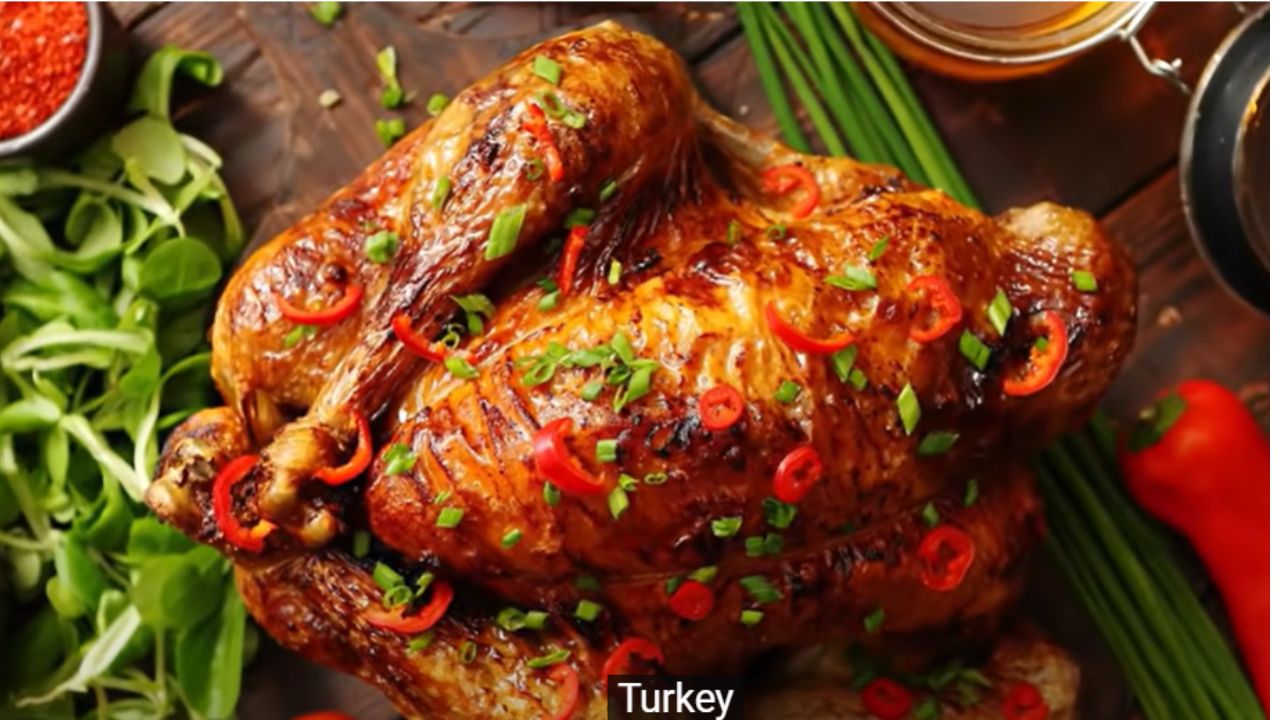
Allergies And Sensitivities
Feeding your cat with people food can be tempting. Those curious eyes and soft meows can make you want to share your meal. But it is important to know that certain foods can cause cat allergies and sensitivities. These reactions range from mild to severe, and understanding the signs can help keep your furry friend safe.
Symptoms To Watch
Recognizing the symptoms of food allergies in cats is crucial. Symptoms can affect different parts of the body. Here are some common signs to look out for:
- Skin issues: Itching, redness, and hair loss
- Digestive problems: Vomiting, diarrhea, and gas
- Respiratory symptoms: Coughing, sneezing, and difficulty breathing
Skin issues are often the most noticeable. A cat might scratch excessively or develop red, inflamed areas. Digestive problems can also be a sign of an allergic reaction. Vomiting and diarrhea can occur soon after eating the food. Respiratory symptoms, though less common, can also indicate a problem.
If you observe any of these symptoms, it’s important to take action. Remove the suspected food from your cat’s diet. Monitor your cat closely. If symptoms persist, consult your veterinarian. They can help identify the allergen and provide treatment options.
Testing For Reactions
Testing for food allergies in cats requires a systematic approach. A common method is the elimination diet. This involves removing all potential allergens from your cat’s diet. Here is a basic outline of how it works:
| Step | Description |
|---|---|
| 1 | Choose a novel protein and carbohydrate source. |
| 2 | Feed your cat this new diet exclusively for 8-12 weeks. |
| 3 | Observe your cat for improvement in symptoms. |
| 4 | Gradually reintroduce old foods one at a time. |
| 5 | Monitor for any return of symptoms. |
This process helps identify which foods cause problems. It is important to be patient. The elimination diet can take several weeks. During this time, ensure your cat does not eat any other foods or treats. Even a small amount can cause a reaction.
Consult your veterinarian before starting an elimination diet. They can guide you through the process and recommend specific foods. Understanding and testing for food allergies can improve your cat’s health and happiness.
Homemade Treats
Many cat owners wonder if their feline friends can enjoy some of the same foods they do. Sharing human food with cats can be tempting, especially when they look at you with those big, curious eyes. But not all human foods are safe for cats. Some can be harmful, while others can be a delightful treat. Making homemade treats can be a fun way to bond with your pet, as long as you know what is safe.
Simple Recipes
Creating homemade treats for your cat can be simple and fun. Here are a few easy recipes to try:
- Chicken Bites: Cook plain chicken breast, cut into small pieces, and serve.
- Fish Snacks: Bake a small fish fillet, ensure all bones are removed, and cut into bite-sized pieces.
- Tuna Treats: Mix canned tuna with a bit of flour and water, form into small balls, and bake until firm.
These treats use common ingredients and are easy to prepare. Always ensure the food is plain, without added salt, spices, or sauces. Plain, cooked meat is often the best choice. Cats enjoy the simple flavors and textures.
Nutritional Balance
Ensuring your cat’s diet is nutritionally balanced is crucial. Cats need specific nutrients to stay healthy:
| Nutrient | Importance | Sources |
|---|---|---|
| Protein | Builds and repairs tissues | Meat, fish, eggs |
| Taurine | Essential for heart and eye health | Meat, fish |
| Fat | Provides energy | Meat, fish oil |
Human foods can be part of your cat’s diet, but should not replace their regular meals. Cats have different dietary needs from humans. Their bodies require more protein and specific amino acids like taurine.
When feeding your cat people food, moderation is key. Too much can lead to weight gain and other health issues. A small treat now and then is fine, but always ensure it’s safe and healthy.
Consulting A Veterinarian
Cats are curious creatures, and they often show interest in what their owners are eating. This makes many cat owners wonder if it’s safe to share their food with their feline friends. The question, “Can cats eat people’s food?” is common among pet owners. Consulting a veterinarian is crucial to ensure your cat’s health and safety.
When To Seek Advice
Knowing when to seek advice from a veterinarian can help prevent health issues. Here are some instances when you should consult a vet:
- If your cat shows signs of illness after eating human food
- When introducing a new type of food to your cat’s diet
- If your cat has any existing health conditions
Some foods are toxic to cats. For example, chocolate, onions, and garlic can cause serious health problems. If your cat accidentally eats these foods, contact your vet immediately. Always err on the side of caution. Better safe than sorry.
It’s also important to note how much human food your cat consumes. A small bite might be okay, but larger amounts can lead to obesity and other health issues. Always monitor your cat’s weight and overall health.

Guidelines For Feeding
There are certain guidelines to follow when feeding your cat human food. Here are some tips to keep in mind:
- Moderation is key. Too much human food can unbalance their diet.
- Avoid toxic foods. Stay away from chocolate, onions, garlic, and grapes.
- Focus on protein. Cats are carnivores. Chicken or fish can be safe in small amounts.
- Avoid seasonings. Salt and spices can be harmful to cats.
Here’s a table of safe and unsafe foods for cats:
| Safe Foods | Unsafe Foods |
|---|---|
| Cooked Chicken | Chocolate |
| Cooked Fish | Onions |
| Plain Rice | Garlic |
| Peeled Apples | Grapes |
Always remember to consult your vet before making any changes to your cat’s diet. Your cat’s health and well-being should always come first.
Feeding Practices
Many cat owners wonder if their furry friends can enjoy human food. Feeding cats people food can be tricky. It’s important to know which foods are safe and how to serve them. This blog post will discuss feeding practices for cats, including table scraps and meal times.
Table Scraps
Offering table scraps to cats can be tempting. But not all human food is safe for them. Here are some safe options and foods to avoid:
- Cooked Meat: Plain chicken or turkey is good. Avoid seasoning.
- Fish: Cooked fish is safe. Avoid bones and raw fish.
- Vegetables: Some cats like peas or carrots. Serve them cooked.
- Fruits: Apples or bananas are safe. Avoid grapes and citrus.
It’s also important to watch out for harmful foods:
- Onions and Garlic: These can be toxic to cats.
- Chocolate: This is very dangerous for cats.
- Dairy: Many cats are lactose intolerant. Avoid milk and cheese.
Feeding table scraps should be done in moderation. Too much can lead to weight gain. Always consult your vet before introducing new foods.
Meal Times
Cats thrive on routine. Having set meal times can help maintain their health. Here are some tips for feeding your cat:
- Regular Schedule: Feed your cat at the same times each day.
- Portion Control: Measure food to avoid overfeeding.
- Balanced Diet: Include both wet and dry food for variety.
Feeding times can vary based on age. Kittens need more frequent meals. Adult cats usually do well with two meals a day. Senior cats might need adjustments based on health.
Here is a simple feeding schedule:
| Cat Age | Meals per Day |
|---|---|
| Kittens | 4-5 |
| Adult Cats | 2 |
| Senior Cats | 2-3 |
Following a routine helps with digestion. It also reduces stress. Happy and healthy cats make for happy owners.
Frequently Asked Questions: Can Cats Eat People Food?
Q1: What Happens If My Cat Eats Human Food?
A1: Cats eating human food can lead to digestive issues. Some foods are toxic, causing vomiting, diarrhea, or even severe health problems. Always consult a vet.
Q2: Is It Ok To Share Food With My Cat?
A2: Yes, it's OK to share some foods with your cat, but avoid toxic foods like chocolate, onions, and garlic. Always consult your vet first.
Q3: What Can I Feed My Cat If I Have No Cat Food?
A3: You can feed your cat cooked meat like chicken, turkey, or beef. Avoid seasoning and bones. Cooked eggs and plain rice also work. Ensure water is available.
Q4: Why Don't Cats Eat Human Food?
A4: Cats don't eat human food because they have different nutritional needs. Their diet requires high protein and specific nutrients. Human food often lacks these essentials and can be harmful.
Q5: Can Cats Eat Bread?
A5: Yes, cats can eat small amounts of plain bread. Avoid giving bread with added ingredients.
Conclusion
Cats can enjoy some human foods safely. Always check with a vet first. Certain foods are harmful to cats. Avoid chocolate, onions, and garlic. Stick to simple, natural foods. Small portions are best. Monitor your cat’s reactions closely. Their health is the priority.
Sharing snacks can be fun. Just ensure they’re safe and healthy. Happy cat, happy home.




